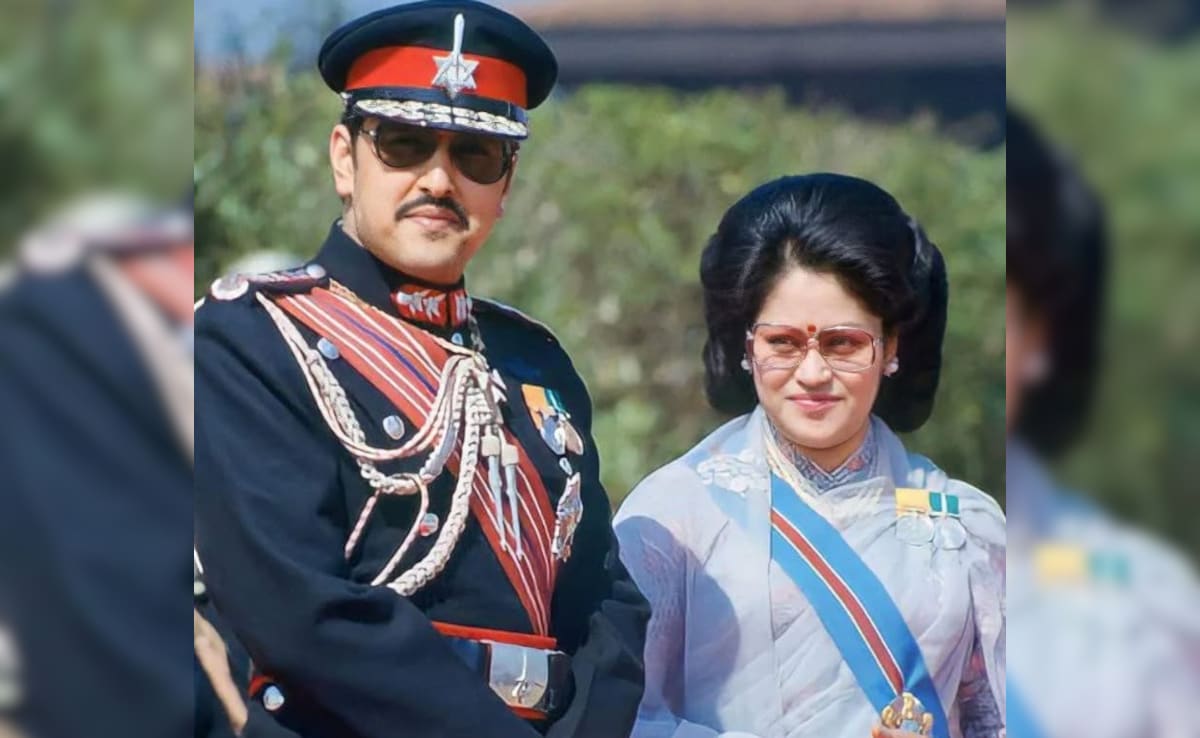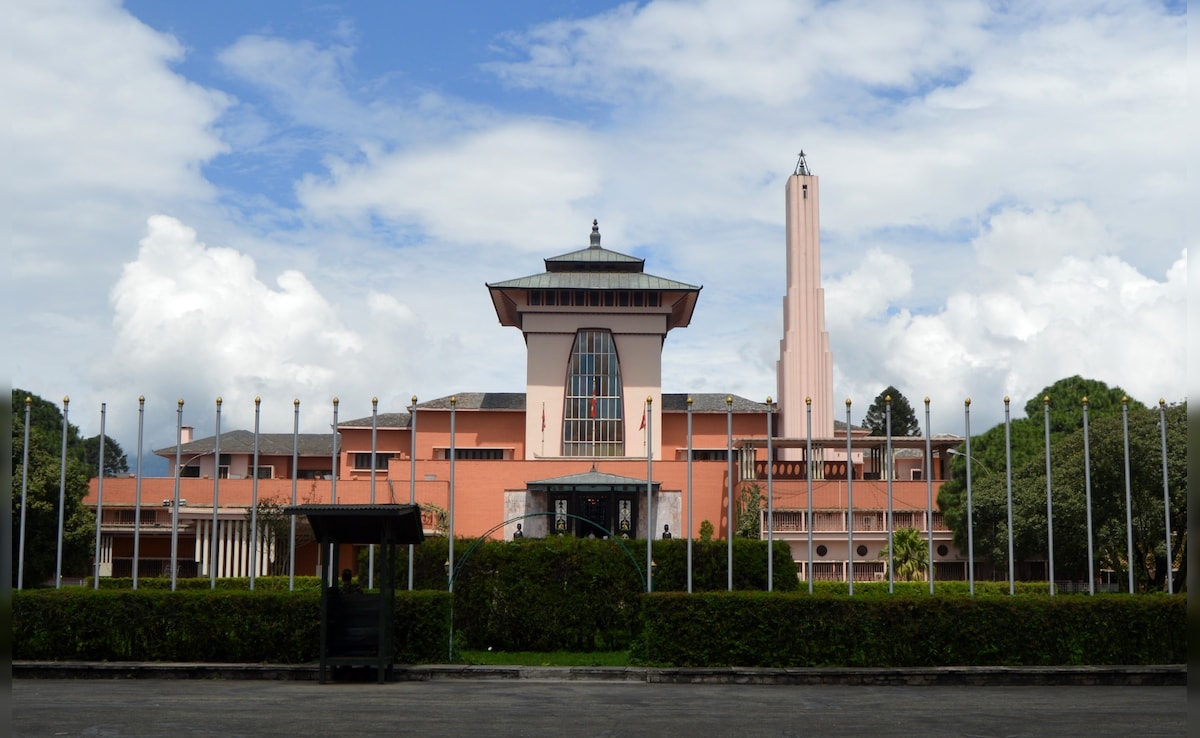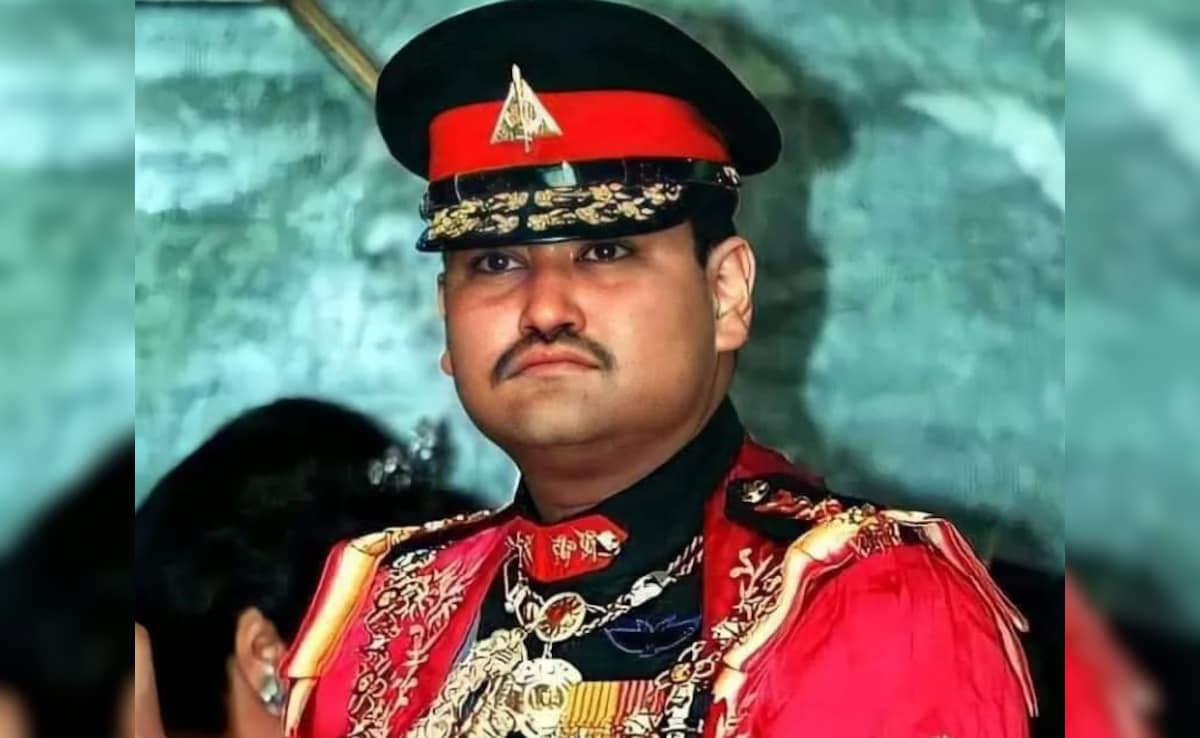Amid a political crisis in Nepal after the Gen-Z protests unseated the incumbent KP Sharma Oli government, pro-monarchy voices are reiterating their demand for a return to monarchy, which was officially abolished in the Himalayan country in 2008. Any conversation on Nepal’s monarchy brings to mind bloody memories of a chilling royal massacre that rocked the country in 2001. And this regicide, many say, had a Gwalior angle.

King Birendra and Queen Aishwarya
A Popular King
In 2001, Birendra Bir Bikram Shah Dev was the king of Nepal. The Harvard University alumnus, who incidentally studied at a school in West Bengal’s Darjeeling, was loved by the Nepalese people for his development initiatives and social reforms.
King Birendra married Queen Aishwarya Rajya Lakshmi Devi Shah in a lavish ceremony in 1970. The royal couple had three children — Crown Prince Dipendra, Princess Shruti, and Prince Nirajan.

Narayanhiti Palace has now been converted to a museum. Photo Credit: Wikimedia Commons
A Palace Massacre
On June 1, 2001, the royal family had gathered in Kathmandu’s Narayanhiti Palace, now a museum. According to a Time report quoting royals present at the gathering, Dipendra (29) was seen when the party began and offered to pour drinks. He then left the party, only to return later. This time, he was dressed in commando fatigues and carried two assault rifles. “Dipendra just looked at his father, said nothing, and squeezed the trigger once,” Ravi Shumshere Rana, the Crown Prince’s uncle, told Time. “The King stood there for a few seconds after the firing, and then slowly he sat down on the ground. It was about this time that the King finally spoke. Kay gardeko? (What have you done?)”.
Dipendra then killed his mother, Queen Aishwarya, siblings Shruti and Nirajan, and five other relatives. The Crown Prince was later found with a bullet injury on his head, presumably due to a suicide shot. Dipendra slipped into a coma, during which he was crowned King, before dying on June 4. Dipendra’s uncle, Gyanendra, ascended to the throne and remained King till the monarchy was abolished.

Nepal’s Crown Prince Dipendra
A Gwalior Link
A government inquiry implicated Dipendra in the royal massacre. A widely accepted theory about his motive points to a relationship with Devyani Rana, the daughter of Nepalese politician Pashupati Shamsher Jang Bahadur Rana and Usha Raje Scindia. She is related to the erstwhile royal family of Gwalior — the late Madhavrao Scindia and Vasundhara Raje Scindia are her maternal uncle and aunt, respectively.
Dipendra met Devyani in the UK, and the two started a relationship. According to reports, the Nepalese royal family opposed this match, and this upset Dipendra, leading him to murder his family. Queen Aishwarya, it is learnt, wanted Dipendra to marry another royal.
There was scepticism from Devyani’s family, too. According to news reports, Devyani’s family was better off than the Nepalese royalty and told her that she would have to downgrade her lifestyle if she married Dipendra.
Some accounts say Dipendra picked a fight with a guest during the June 1 party and was drunk when he pointed the gun at his family.
Nepal’s Pro-Monarchy Protests
Months before KP Sharma Oli was ousted as Nepal Prime Minister amid Gen Z protests, he had accused former king Gyanendra of inciting violence at a pro-monarchy protest. Addressing the House of Representatives over incidents of arson at a pro-monarchy gathering on March 28 this year, Mr Oli said, “The former King Shah also cannot be spared for the violence. A leader who incites people to die, a person who has been thrown into a corner by history, a coordinator of a campaign, a person who has the intention of becoming a ruler and causing loss of wealth and looting; How can a person who has the intention of becoming a ruler remain silent in the shadows? He is the one who is ultimately responsible for all these incidents; he must take responsibility.”
Expressing sorrow over the violence that left two people dead, the former king had said, “There is no system greater than democracy when it comes to guaranteeing civil liberty.”




